WHY I AM FASCINATED BY AQUATIC VR
This text was written about my aquatic VR experience, Spaced Out.
“This [Ballast’s DIVR headset] is legitimately one of the coolest things I have ever done in VR”.
– Palmer Luckey (sic!), founder of Oculus, acquired by Facebook in 2014
Do you remember your impression of trying VR for the first time? Didn’t you sense the new possibilities for human experiences? A few years down the line, because of technical limitations and experimental content, VR, for some, has stopped generating magic for the general public. The cycle of this technology has reached a disillusionment stage and is going through a temporary sobering period. Here enters aquatic VR, the ultimate poetic machine.
Enter Ando Shah, my long-time collaborator, with whom I co-created many VR experiences like Jet Lag, Vibrations and Patterns. Along with Stephen Greenwood and Atlas Roufas, he co-founded the Silicon Valley-based Ballast Technologies. BallastVR has “created DIVR, a revolutionary underwater VR system that transforms nearly any pool into a memorable sensory experience, transporting guests deep under the sea, floating through outer space and voyaging in other fantastic worlds. DIVR is designed for pools that are 3-4 feet in depth, so that when each guest is in the pool they may easily stand up if there is ever any discomfort or problems breathing through the snorkel. The experience includes a floating belt attached to an anchor. The anchor device allows visitors to not drift, and thus avoid collision with neighboring floats.” For them aquatic VR was born out of a desire for fun, exploration and powerful experiences for mass audiences. They are fueled by a passion to bring the magic of our oceans to people that may never be able to otherwise access them and use technology to show guests to new dimensions that they never imagined exploring.
The experience of being in a virtual world while being in the water creates a literal immersion. Putting your head underwater immediately makes the experience another impression of reality. For Janet Murray, in her book, Hamlet on the holodeck: the future of narrative in cyberspace, immersion is a metaphorical term derived from the physical experience of being submerged in water. One feels the same feeling of an immersive experience psychologically as when she plunges into the ocean or into a swimming pool: the feeling of being completely surrounded by an entirely different reality, as different as the water or the air, which takes all our attention, which monopolizes our perception. With aquatic VR, the metaphor of immersion is wholly realized. As soon as your ears are submerged, and the body is comfortably floating, you may experience a sense of teleportation, away from your normal experience of everyday’s reality.
According to Google’s website for XR developers, Degrees of freedom (DoF) refers to the number of basic ways a rigid object can move through 3D space. 3DoF means we can track rotational motion but not transnational. For the headset, that means the device can track whether the user has turned their head left or right, tilted it up or down, or pivoted left and right. 6DoF means to additionally track transnational motion.
The DIVR is just a 3DoF headset. Therefore you could “only” experience 360° content but this is challenged by the weightlessness impression. After a few minutes in the water while wearing the VR headset, your body settles in a still position. Your head faces down, but for the content the horizon is at an angle of 90°. With Aquatic VR, there isn’t any motion-sickness because the inner ear experiences a different gravity, almost reaching an illusion zero gravity. In the water, because earth-gravity is challenged, you can view crazy camera movements and never get dizzy. The same content shown on a “dry” headset would cause nausea. At some point, during a trajectory of the virtual movement, you might feel that your body is pushed by a real physical current in the water. The anchor prevents you from banging against the edge of the pool. For a suspended time, you forget the difference between 3DOF and 6DOF; hence the pre-calculated images become a simulated real-time agency. You feel your body freely roaming in a virtual world, floating in space.
Those who experience SPACED OUT comment they feel deep relaxation and a thought-free mind, in the line of one hour of meditation. It may have some benefits in healthy people, such as muscle relaxation, better sleep, decrease in pain, and decreased stress and anxiety. Immersion is generated by both perceptual (visual, auditory, kinesthetic) and mental (imaginary) modalities. Wearing DIVR, you are tricked to feel that your body is weightless, hacking the brain into believing one is in space. The pre-rendered camera movements create an illusion of body in motion, and therefore agency within the virtual world. For me Aquatic VR fulfills the promise of virtual reality. This promise of a beautiful experience helps one re-discover the wonder of trying VR for the first time.




